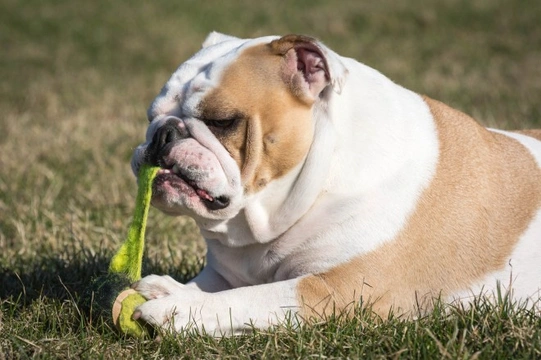
How can you save a choking dog?
Choking is a sudden and life-threatening problem that hopefully no dog owner will have to witness, but should it happen to your own dog or another one that you see out and about, knowing what to do and acting quickly can help to save a life. Lots of first aid advice is widely available on how to save a choking child or adult, but much less written about dogs; nevertheless, knowing what to do and being able to keep your head in this type of emergency can prove just as effective for dogs as it can for people, and all dog owners should learn the basics of what to do and as importantly, what not to do if something like this should happen.
In this article, we will explain how to identify the signs of a choking dog, and how to intervene to try to save them. Read on to learn more.
What to do to save a choking dog
A choking dog will have something lodged in their windpipe or throat that is obstructing the airway, and removing this object quickly and successfully is the key to saving the dog.
First of all, you will need to open your dog’s mouth. This is easier with help, but if you are alone, stand behind your dog with your dog trapped between your legs, and insert your thumb and forefinger into the sides of the mouth to open it. Some dogs with particularly strong jaws can be difficult or impossible to force their mouths open, such as the Staffordshire bull terrier. It is a good idea to begin training your dog when they are young, to permit people to open their mouths without a fuss.
Once you have the mouth open, look down the throat to see if the obstruction is visible. A friend with a torch is helpful for this, and you should shine the torch into the mouth to try to spot the obstruction. If you can see the object in question and can grasp it without pushing it further down the throat, reach in and pull it out. Don’t risk doing this if you think there is a chance you will not be able to take hold of it, or worse, push it further down the throat.
It is also worth remembering that canine teeth, particularly those in the mouth of a panicking dog, are very sharp; you may be facing the risk of injury when you do this, and ultimately, the decision of what to do is up to you.
If you cannot see the obstruction
If you cannot see the obstruction in the throat, or are not confident that you will be able to remove it without pushing it into the throat even further, you will need to take a different approach.
With your dog standing up, again, stand behind them, and clasp your hands together under the stomach. Lift your dog up from the rear end sharply, leaving the front legs on the ground. This will hopefully cause the obstruction to move forwards and/or become dislodged, but this might not be enough on its own.
While your dog’s rear end is off the floor, use the heel of your hand to firmly pound on your dog’s back, between the shoulder blades, to attempt to dislodge the object.
If this still proves ineffective, move your clasped hands up towards the bottom of the ribcage, clasp your hands into a two-handed fist, and use this to sharply push against the bottom of the ribs several times, to expel air through the windpipe and hopefully, remove the object. How hard you need to push will depend on the size of your dog and how delicate they are; sharp movements may potentially break the ribs, which of course, should be avoided.
However, if push comes to shove, broken ribs can heal, and choking is the more immediate and life-threatening problem.
If your dog loses consciousness
If your dog passes out and your efforts have still not proven successful, you will now have a very limited short window of time in which to save your dog, as they are likely suffering from a lack of oxygen. While your dog is unconscious, you will have another chance to gain access to their mouth, without your dog fighting back. Reach into the mouth again and do everything that you can to get to the foreign body; at this stage, pushing the object further into the throat is a risk you will have to take, as you are running out of better options.
If your dog stops breathing completely while the object is still present in the throat, CPR is not very likely to prove effective, as you simply will not be able to get air into your dog.
Concentrate on removing the object by any means necessary, and then revive your dog if possible as soon as you can with CPR.
After the incident
Assuming that you manage to successfully remove the object that your dog was choking on with your dog still alive, it is important to get them to the vet right away to get your dog checked on, in case any further damage has occurred, or there is anything left remaining in the throat.
These steps are not a fool proof way to save the life of a choking dog, but they can greatly raise the chances of survival, so make sure that you understand what you should do in the case of an emergency, and are confident in doing it.



